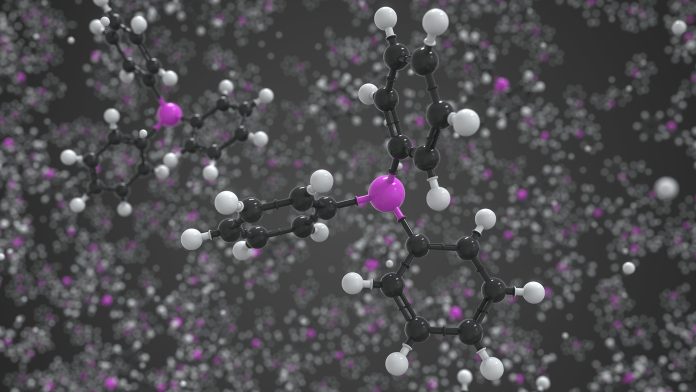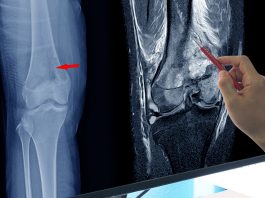In a new study, researchers from the University of Surrey and the Graz University of Technology have achieved a groundbreaking understanding of molecular movement.
The scientists have studied molecular movement across a graphite surface in unprecedented detail. This particular molecule moves like a Moon lander.
Analysing molecular movement is vital for understanding chemical reactions and developing nanotechnologies.
Dr Marco Sacchi, Associate Professor in Physical and Computational Chemistry at the University of Surrey, said: “Our work has only scratched the surface of the complexities behind the self-assembly of non-planar molecules on graphite. It’s a step towards unravelling the subtleties of surface chemistry and its applications in nanotechnology.”
The study is published in the journal Communications Chemistry.
Studying molecules of triphenylphosphine
To unlock key insights, the team studied molecules of triphenylphosphine (PPh3). These molecules are three-pointed, propeller-like structures with a range of uses, including drug delivery and in lithium battery cells.
The scientists used a combination of neutron spectroscopy and advanced computer simulations to track molecular movement on a graphite surface.
Remarkable molecular movement
The team found that triphenylphosphine jumped and rotated on the graphite’s surface, like a spacecraft touching down on the lunar surface.
This allowed the molecules to move with surprisingly little energy.
Both the shape of PPh3 and its strength of adhesion to the surface influence how it moves. Unlike simpler molecules, PPh3’s ability to rotate and change shape affects how it spreads out across the surface.
This relationship between shape and movement is crucial for understanding how molecules move around and react with each other.
Future applications of the research
By studying these interactions, scientists can develop better models to predict how chemical reactions happen and how fast they occur under different conditions.
Dr Anton Tamtögl, experimental physicist at Graz University of Technology, said: “Exploring the intricate world of molecular self-assembly on graphite surfaces has been an exciting journey.
“The experimental results have unveiled a captivating dance of molecules, providing us with a deeper understanding of surface dynamics and opening up new horizons for materials science and nanotechnology.”
The results could lead to new advanced materials or more efficient ways of making medicines and nanotechnology.





